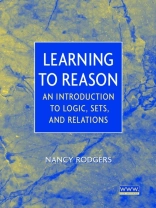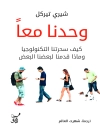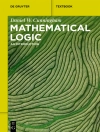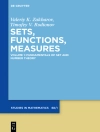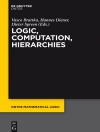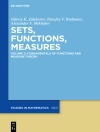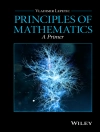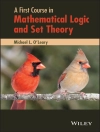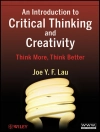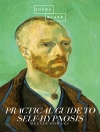Learn how to develop your reasoning skills and how to writewell-reasoned proofs
Learning to Reason shows you how to use the basic elements ofmathematical language to develop highly sophisticated, logicalreasoning skills. You’ll get clear, concise, easy-to-followinstructions on the process of writing proofs, including thenecessary reasoning techniques and syntax for constructingwell-written arguments. Through in-depth coverage of logic, sets, and relations, Learning to Reason offers a meaningful, integratedview of modern mathematics, cuts through confusing terms and ideas, and provides a much-needed bridge to advanced work in mathematicsas well as computer science. Original, inspiring, and designed formaximum comprehension, this remarkable book:
* Clearly explains how to write compound sentences in equivalentforms and use them in valid arguments
* Presents simple techniques on how to structure your thinking andwriting to form well-reasoned proofs
* Reinforces these techniques through a survey of sets–thebuilding blocks of mathematics
* Examines the fundamental types of relations, which is ‘where theaction is’ in mathematics
* Provides relevant examples and class-tested exercises designed tomaximize the learning experience
* Includes a mind-building game/exercise space atwww.wiley.com/products/subject/mathematics/
Table of Content
LOGICAL REASONING.
Symbolic Language.
Two Quantifiers.
Five Logical Operators.
Laws of Logic.
Logic Circuits.
Translations.
WRITING OUR REASONING.
Proofs and Arguments.
Proving Implications.
Writing a Proof.
Working with Quantifiers.
Using Cases.
Proof by Contradiction.
Mathematical Induction.
Axiomatic Systems.
SETS –
THE BUILDING BLOCKS.
Sets and Elements.
Operations on Sets.
Multiple Unions and Intersections.
Cross Product.
Finite Sets.
Infinite Sets.
RELATIONS –
THE ACTION.
Relations.
Equivalence Relations.
Functions.
Order Relations.
Summary.
Appendices.
Bibliography.
About the author
NANCY RODGERS, Ph D, is Professor of Mathematics at Hanover College, Hanover, Indiana.
